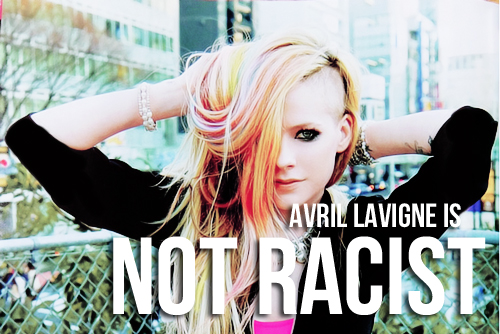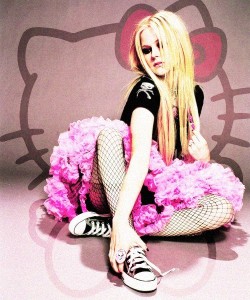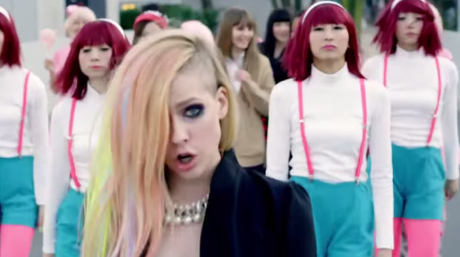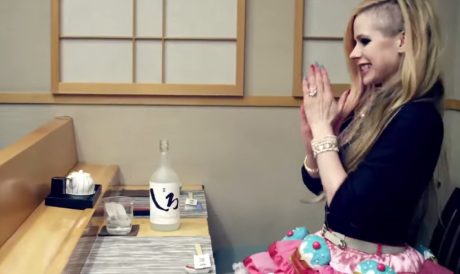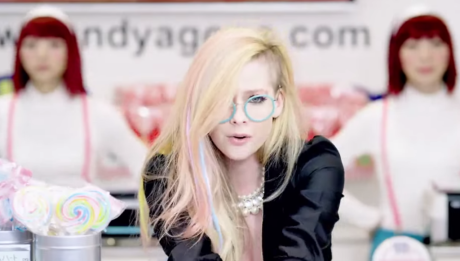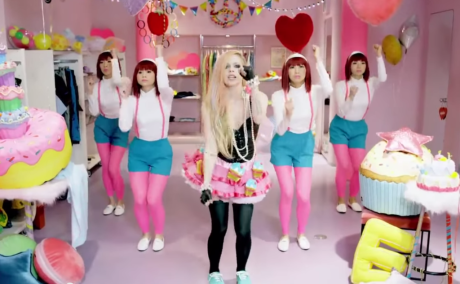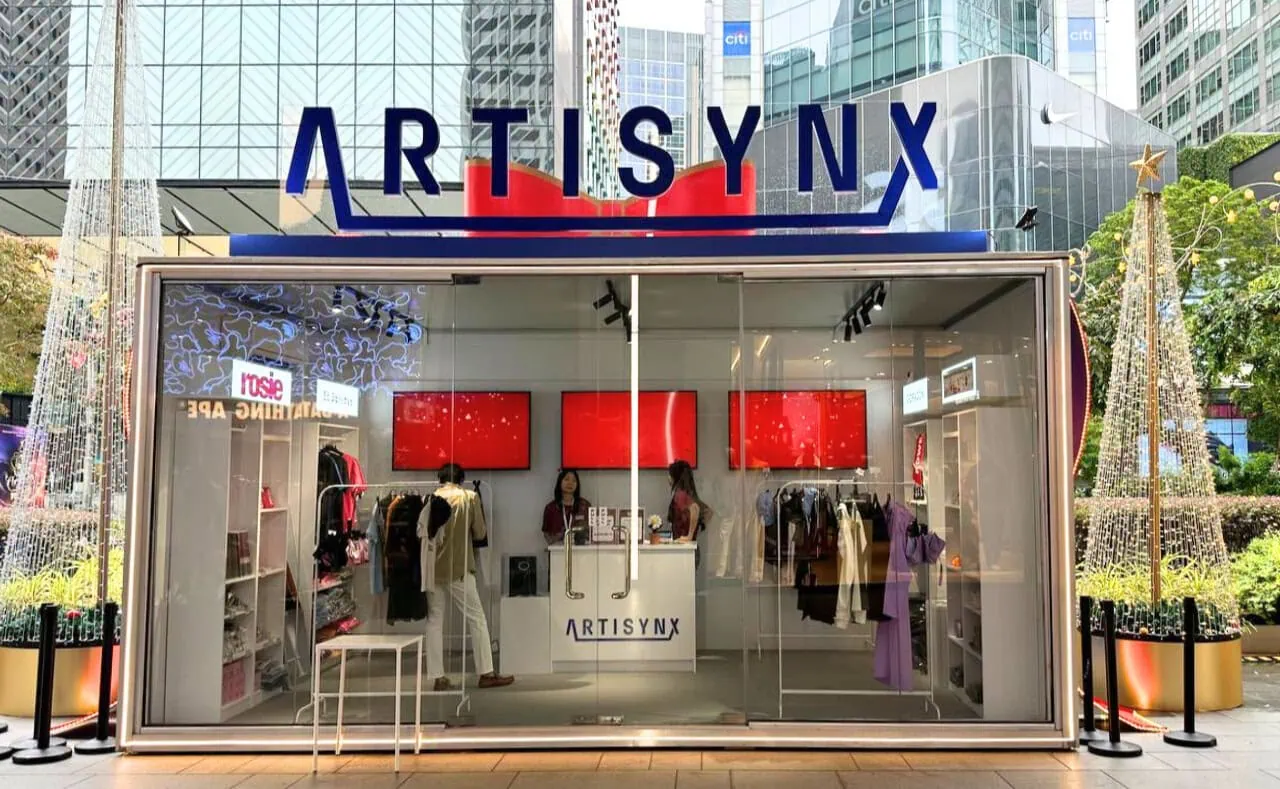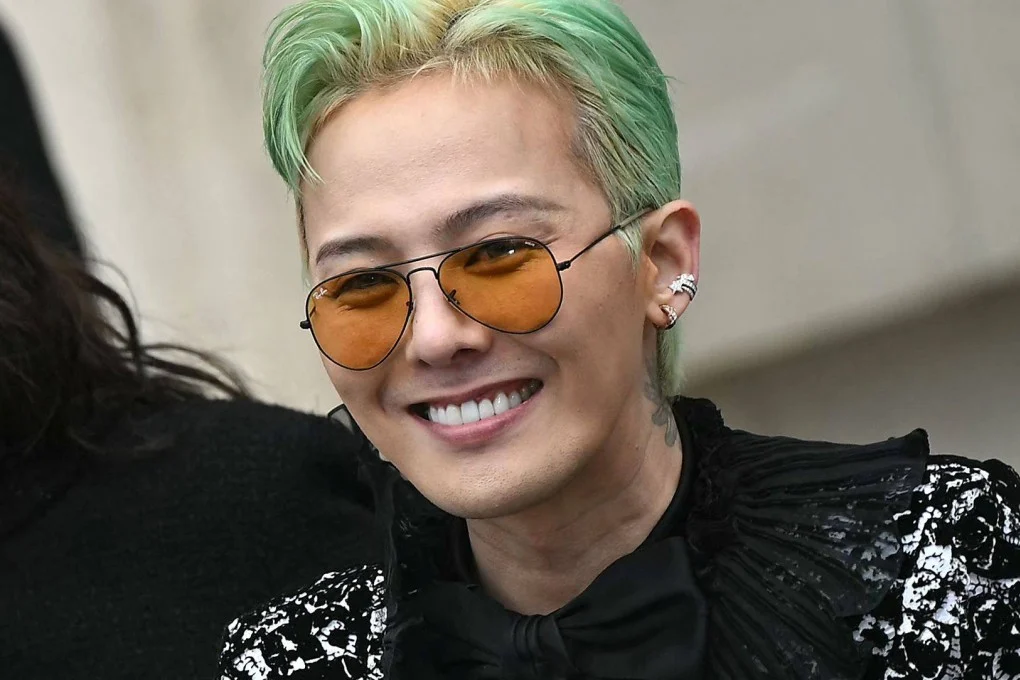If you haven’t heard about it already, you probably don’t need to. Avril Lavigne made her move into the realm of all things kawaii recently with her confused new single “Hello Kitty” being released on YouTube, accompanied by What Is Now, an infamous music video.
Lavigne has kept things relatively low key ever since what was arguably the peak of her career “The Best Damn Thing” way back in 2007. Enjoying moderate success from her subsequent follow up efforts, Lavigne hasn’t really made a big splash among mainstream news outlets & social media until very recently.
“Hello Kitty” is a strange attempt at the 2013 crossover dubstep trend that never really seems to take off. It’s a glaring combination of EDM & the classic Avril Lavigne guitar riff that falls short of being anything remotely commercially successful. The song really doesn’t do anything for the Canadian songstress, known for her bratty attitude and strong vocals — and it lacks the typical punch that Lavigne packs in her other angst fuelled tracks, but also doesn’t utilise the impressive powerhouse vocals she is known to possess.
Apart from being a poor single choice, it was also accompanied by a strange video that looks like it was thrown together on iMovie 10 minutes before it was released. But according to the press, all of these things can be overlooked in favour of the apparent racism that Lavigne is accused of displaying profusely throughout the video.
If you haven’t seen the video, I’ll save you the trouble of watching and I’ll just break it down for you in the following screenshots. It’s comprised of Avril prancing around the streets of Japan, as well as eating in a Japanese restaurant, and frolicking in a cupcake store. Fairly innocent scenes, no?
Critics have attacked Avril and called her employment of four (coincidentally) Asian backing dancers, in saying that she was “parading around with four identical, creepily expressionless Asian women behind her in a vaguely offensive troupe” [x]. Amanda Duberman over at The Huffington Post hopped on the AVRIL LAVIGNE IS RACIST!! bandwagon too, and annoyingly titled an article “Avril Lavigne, Asian Women Are Not Your Props.” [x]
It’s hysterical that most of the critics calling Avril out on her apparent appropriation of Asian women, are in fact Caucasian middle-aged males and females who are fairly happy to yell at Avril Lavigne for appropriating Asian women in their music videos but seem to have no problem when Beyonce or any other mainstream artist employs a human (of any race) to simply dance behind them.
So, why is it such a problem when Avril Lavigne does it?
Is sampling other influences offensive?
Here we have, a horrendous double standard. It’s totally A-Okay to use white people as back up dancers, that’s humane and totally just — but using Asian women to front your dance troupe? Racist! Appropriation! Not fair!
The genius over at Huffington Post also goes on to say that Avril’s use of Hello Kitty “dismisses Asian culture and the women who choose to enjoy it as mindless pawns at white America’s disposal.” Hello Kitty is a world wide brand that is enjoyed by millions universally, and it’s also that: a brand. However ridiculous the song, the content is simply Avril declaring her love for the iconic Japanese label, offering it free promotion to the American market.
Can’t anyone simply express their hobbies, and interests without being attacked for not expressing them in a completely white-washed fence standing fashion?
Lavigne is also attacked for her “appropriation” on Japanese terminology & street fashion. Isn’t that what pop culture is, though? Sampling other people’s influences & works in order to inspire your own? No one had a problem with Lady Gaga’s French verse in Bad Romance, and everyone loved the tribal influence in Come & Get It by Selena Gomez.
If those aren’t good enough culture sampling references for you, then take a look at Valentino’s Spring/Summer fashion line, where they took inspiration from a wide source of cultural influences. It’s simply unfair to look at this music video and treat it as the biggest example of cultural appropriation in pop music, because it simply isn’t. If you’re going to call out Avril Lavigne, call out everyone else too.
Or then again: don’t call anyone out. Unless something is extremely offensive & designed to hurt a culture, or offend a person there shouldn’t be an issue taken with it. Social media has given people a platform to stir shit and to start trouble and put words in other people’s mouths where there weren’t any before. We’ve got to stop telling people what they really meant to say, or how their work REALLY comes across, when the only person who can truly tell you what their work means, is the artist themselves.
The Japanese embassy in Washington DC also made a statement saying that they believe the video was made “with only good intentions” and that “would be happy if the discussions surrounding her song and music video results in more people discovering the beautiful and rich culture of Japan.” [x]
If the Japanese officials can recognise that all Avril was trying to do was express her love for her Asian fans, and the Japanese market that is always receptive to her music, why can’t everyone else see that too?
Creativity is consistently being squashed and over-analysed by people who kick up a fuss, simply because they can. Maybe if the media stopped trying to make an international incident about & taking offense towards EVERYTHING, we could then just laugh at what a train wreck this video & song are, rather than attacking the obviously ill-guided but well intended individual that created it.
Featured image: Avril Photos


